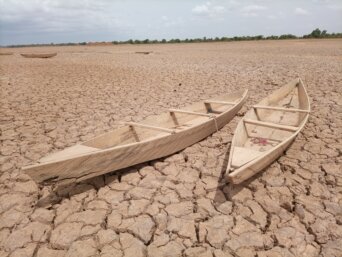- About
- Topics
- Story
- In-Depth
- Picks
- Opinion
- News
- Donate
- Signup for our newsletterOur Editors' Best Picks.Send
Read, Debate: Engage.
| topic: | Climate Change |
|---|---|
| located: | Brazil, Chile, Guatemala, Honduras, Argentina, Peru |
| editor: | Ellen Nemitz |
Last week, the Intergovernmental Panel on Climate Change (IPCC) released a new report on the state of the global climate crisis, sending an urgent message to the world: it is undeniable that humans are responsible for the rising temperatures and all of the causes of the climate emergency.
Increasingly severe droughts and floods, changing rain patterns, extreme temperatures (both high and low), among other climatic effects may worsen within the coming decades if nothing is done. However, despite the warning for future catastrophes, the climate crisis is already a current reality in many countries.
The Latin American and Caribbean share of global greenhouse gas emissions is less than 10 percent, according to the Economic Commission for Latin America and the Caribbean. Nonetheless, these nations are facing some of the harshest effects of the climate emergency.
The IPCC report confirms what people are already experiencing: the mean temperatures in Central and South America are likely to rise "greater than the global average,” rain levels are expected to be higher or lower depending on the region, and sea levels have already risen at a higher rate compared to the global mean in the South Atlantic and the subtropical North Atlantic. In the near future, it is expected that coastal areas in Central and South America will experience more floods and shoreline recession along sandy coasts.
The crisis is already knocking on our doors.
Over the past years, regions of Brazil which once had well-distributed rainfall have been facing prolonged droughts. As rain levels have decreased, people living in several affected cities have faced water shortages and rationing. Agriculture is also affected by the drought, as well as by outlier cold waves caused by atypical drops in temperatures in Brazil this winter - some regions even registered snowfall.
Food production is also a concern in poorer countries, such as Guatemala, Honduras, El Salvador and Nicaragua. In the so-called “dry corridor of Central America,” nearly 2 million people may have difficulties growing crops due to long droughts and intense rains caused by “erratic climate patterns.” Central America is also more likely to be hit by stronger, potentially destructive storms, usually in vulnerable and poor regions that lack resources for prevention and reconstruction.
Climate change-related catastrophes have also affected communities in the Andes region that depend on mountain glaciers for potable water, such as in the Atacama desert in northern Chile as well as communities in Ecuador, Bolivia, Argentina and Peru. The increasing temperatures and decreasing rain levels threaten to eradicate this essential resource.
In allusion to the upcoming World Humanitarian Day on 19 August, the United Nations called on the world to act in benefit of those suffering the most with climate change. The main goal of the campaign is to "highlight the immediate consequences of the climate emergency for the world’s most vulnerable people and ensure that their voices are heard, and their needs top the agenda at the UN Climate Change Conference (COP26) in November.”
While the time is running out to avoid the worst-case scenario and returning to pre-industrial temperatures is already impossible, world leaders and communities must focus their efforts on climate justice, resilience and solutions.
There are ways to make life better in every region affected by the climate emergency and prevent mass migrations that endanger many lives - but they demand a willingness to change behaviors and to mitigate the worst consequences.
Image by: Yoda Adaman

